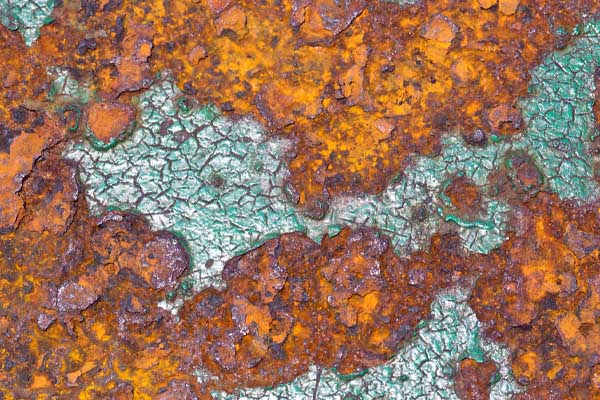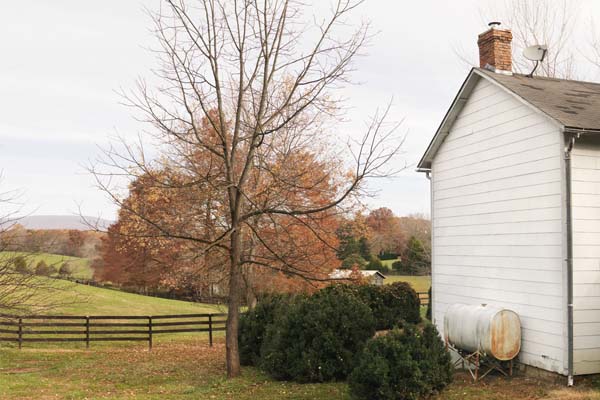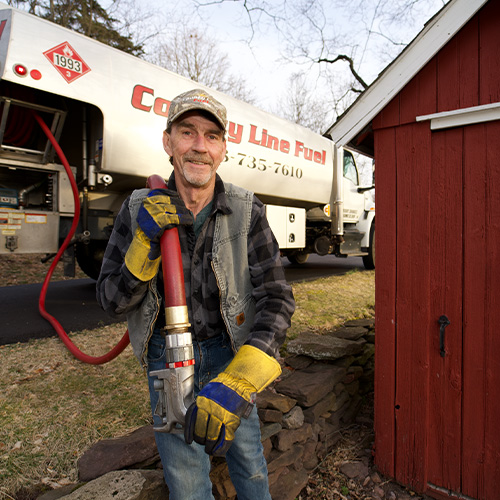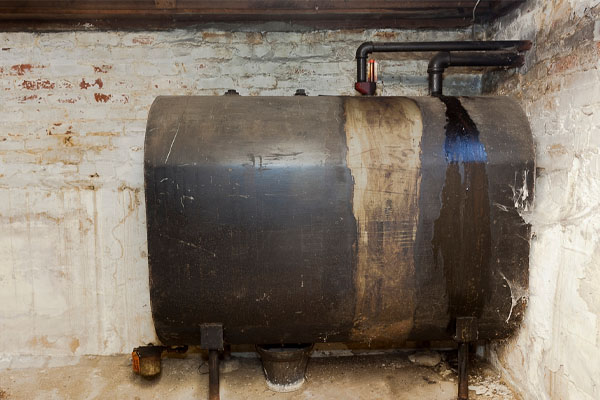Table of Contents
Heating systems that use oil depend on fuel oil tanks for storing and safeguarding the fuel. While this setup is generally effective, it’s not without its flaws. Water intrusion into the heating oil tank is a notable issue, leading to complications like oil tank condensation. This issue, though frequent, can be avoided with proper measures.
Delving into Oil Tank Condensation: Vital Knowledge for Homeowners
Continue reading to discover more about the intricacies of oil tank condensation and effective prevention strategies.
Why & How Water Gets Into Your Home Oil Tank

Water, a ubiquitous environmental element, can assume various forms and gradually find its way into your oil tank. By determining the pathways through which water enters the oil tank, you’ll be better equipped to prevent it from recurring.
Rainwater
Outdoor positioning of your tank subjects it to direct exposure to rainwater. Water, known for its relentless nature, can infiltrate through the smallest openings, including loosely fitted caps or lids.
Tanks positioned near your home are additionally at risk from gutter overflows. As oil tanks age, they may develop vulnerabilities like deteriorated seals or cracks in their structure, further increasing the risk of water entry.
Condensation
Condensation is an inevitable concern for oil tanks, regardless of their location. Moisture-laden air from outside can be drawn in through the tank’s air vents. When the inside of the tank is cool enough, this moisture condenses from vapor to liquid.
This leads to water droplets forming on the tank’s inner walls, eventually pooling at the bottom. A small amount of water might not seem significant, but condensation can intensify over time without proper action.
Groundwater
Underground oil tanks are susceptible to groundwater seepage through any holes or cracks. This allows water in and poses a risk of oil leakage, potentially contaminating the soil. Immediate professional intervention is crucial for any underground tank damage.
What Will Happen If Water Gets into My Heating Oil Tank?

Since oil floats on water, detecting moisture in your heating oil tank can be challenging, primarily through visual inspection alone. This issue becomes even more complex with underground tanks, where access is limited. Water presence often goes unnoticed for extended periods, becoming evident only when symptoms manifest.
Preventive measures are far more effective than addressing water damage in an oil tank. Regular maintenance and inspections are crucial to avoiding major issues. Use a water-finding paste (following your manufacturer’s guidelines or consulting a heating oil expert) for routine checks.
Apply it to the tank’s bottom, where water typically collects. A color change in the paste signals the presence of moisture. If a significant amount of water is detected, seeking immediate professional assistance is crucial.
Strategies to Prevent Heating Oil Tank Condensation
With an understanding of potential risks, it’s vital to concentrate on preventing further water ingress into your oil tank. Here are some straightforward strategies you can implement:
Inspect the Fuel Oil Tank Regularly

Regularly inspect the exterior of your oil tank for any signs of wear, such as rust, chipped paint, or perforations. Make sure that all caps and lids are securely fastened.
Perform Water Tests
Since visual inspections might miss some issues, periodically test for water presence. Apply a water-finding paste (as recommended by the manufacturer or advised by a heating oil expert) to the bottom of the tank. For underground tanks, conducting soil contamination tests is also advisable.
Shield the Tank from Heat
Place new tank installations in shaded areas and use reflective, light-colored paint on the exterior to minimize heat absorption. This strategy helps reduce internal condensation caused by significant temperature variations outside the tank.
Maintain a Full Tank

Allowing the fuel level to drop too low can lead to more moist air entering the tank, thereby increasing condensation risk. To prevent this, ensure timely oil deliveries, keeping the tank full during heating and off-season.
Contact Professional Services
Seeking professional assistance is vital for thoroughly inspecting and maintaining your heating oil tank. Experts can replace aging tanks and advise on optimal placement for extended longevity.
Don’t wait until condensation becomes a problem. For expert assistance and reliable solutions, contact County Line Fuel today.
How A Professional Removes Water From Your Oil Tank
Addressing the standing water is crucial if a moisture test confirms water presence. Professionals should always handle this task. Depending on the specific circumstances, a professional might undertake various steps to remove the water effectively.
- Draining Process: Metal tanks often feature a sludge valve at the bottom. Professionals can utilize this valve to drain water. During this process, some oil may also escape, which they will collect and dispose of responsibly.
- Pumping Method: For some tanks, which typically lack a sludge valve, a hand pump can be used to remove small quantities of water. Professional intervention is recommended for larger volumes to ensure safe and efficient removal.
- Absorption Technique: Professionals may use water-absorbent socks in the tank to soak up moisture and prevent it from accumulating at the bottom. These socks need regular replacement, typically every few months, and must be disposed of properly. Additionally, an alcohol-based dispersant can be employed as an alternative method.
Don’t let oil tank condensation catch you off guard. Reach out to County Line Fuel now to ensure your heating system remains in optimal condition.
Possible Damages If Water Is Not Removed From Your Oil Tank
Here are some of the damages the oil tank might incur if the water is not removed from it:
Oil Tank Rust

Ignoring water in oil tanks is a common mistake, often perceived as harmless. Yet, neglect can lead to significant heating system damage over time. One primary concern is the corrosion of the oil tank walls, especially prevalent in steel tanks that typically rust from the inside out.
Externally, the tank might appear intact, but internal corrosion can significantly weaken the walls. This compromises the tank’s integrity and adversely affects the system’s efficiency and performance.
- Freezing: While heating oil has a low freezing point, making it suitable for cold climates, water within the tank can freeze at 0 degrees Celsius (32 degrees Fahrenheit) – a common temperature in many regions. This frozen water can obstruct the oil supply lines, potentially causing a complete system shutdown precisely when heating is most needed.
- Bacterial Growth: Moist environments are perfect for bacterial growth, and water in oil tanks creates such conditions. These bacteria can proliferate and form sludge at the bottom of the tank. Additionally, they may produce acids that accelerate corrosion, affecting not just the tank but also burners, filters, and fuel lines, leading to significant issues.
Conclusion
Water in an oil tank is a serious concern. It’s crucial to prevent its entry to avoid damage to the tank and complications in the heating system. Adhere to the prevention strategies outlined and seek professional assistance for complex situations.
Call County Line Fuel For Top-Notch Home Comfort Solutions

County Line Fuel, a reliable heating oil delivery service in Clinton, NJ and the surrounding area, offers top-notch products and services at the most affordable prices in the region. Rely on us for prompt, accurate, and budget-friendly heating oil deliveries, with customizable plans and financing options designed for your convenience.
Our commitment is to ensure a seamless and cost-effective home heating experience. Our HVAC experts provide comprehensive services, including installations, repairs, and maintenance, ensuring your home stays comfortable year-round. We’re committed to customer satisfaction, offering personalized, efficient solutions for all your HVAC needs.
Contact County Line Fuel today for exceptional service and home comfort. Call us to get started!
You can click here to contact us now or call us at (908) 735-7610 to find out more! Click the link to view our service area.
Related Articles:
